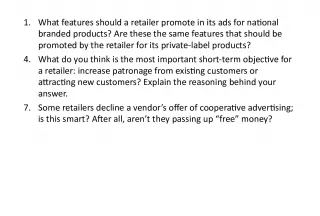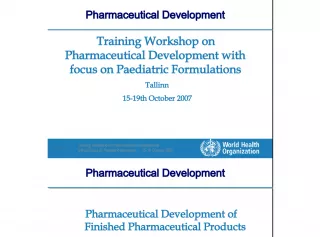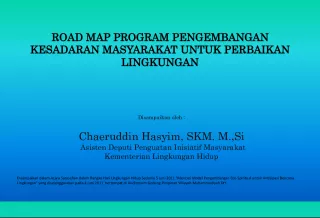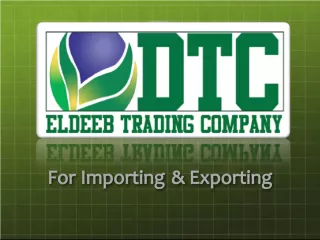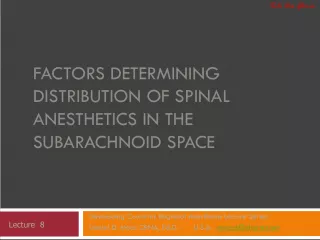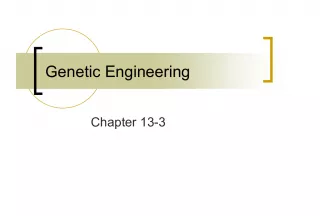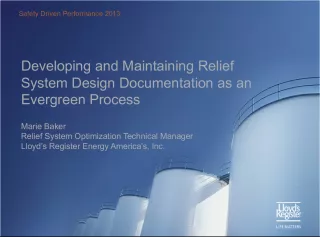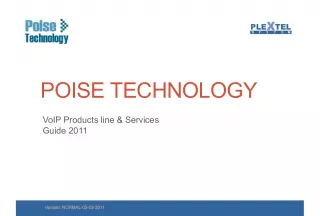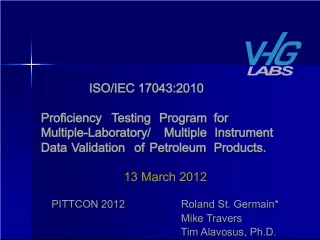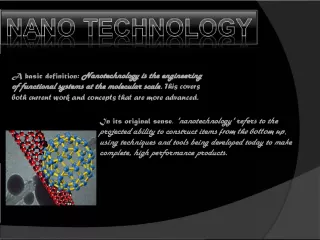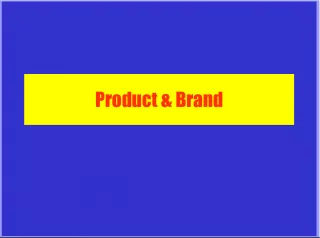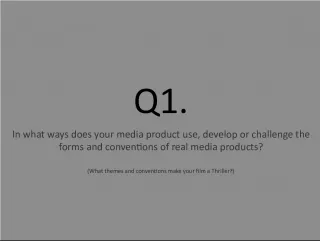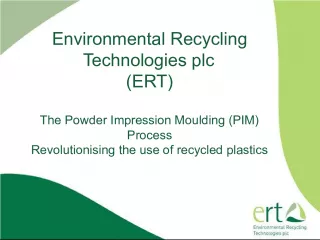Developing New Products


This chapter focuses on the process of innovation within firms, outlining the reasons why firms innovate and the different groups of adopters that are articulated by the diffusion of innovation theory. The chapter also explores the factors that determine
- Uploaded on | 2 Views
-
 aubreeknight
aubreeknight
About Developing New Products
PowerPoint presentation about 'Developing New Products'. This presentation describes the topic on This chapter focuses on the process of innovation within firms, outlining the reasons why firms innovate and the different groups of adopters that are articulated by the diffusion of innovation theory. The chapter also explores the factors that determine. The key topics included in this slideshow are . Download this presentation absolutely free.
Presentation Transcript
Slide1chapterdeveloping new products eleven McGraw-Hill/Irwin Copyright © 2013 by The McGraw-Hill Companies, Inc. All rights reserved.
Slide2LEARNING OBJECTIVESLO1 Identify the reasons firms innovate. LO2 Describe the different groups of adopters articulated by the diffusion of innovation theory. LO3 Identify the factors that determine how fast innovation diffuses. LO4 Explain the various stages involved in developing a new product or service. LO5 Describe the various product life cycle concepts. Developing New Products 11-2
Slide3Innovation and Value WHY DO FIRMS CREATE NEW PRODUCTS? Changing Customer Needs Market Saturation Managing Risk through Diversity Fashion Cycles 11-3
Slide4Diffusion of Innovation11-4
Slide5New Product IntroductionsPioneers radically change competition and consumer preferences. Pioneers radically change competition and consumer preferences. ©Derrick Donnelly, Blackbag Technologies 11-5
Slide6Using the Diffusion ofInnovation Theory Factors Affecting Product Diffusion Relative Advantage Compatibility Observability Complexity and Trialability 11-6
Slide7How Firms Develop New Products11-7
Slide8Idea Generation11-8
Slide9Product DevelopmentPrototype Alpha testing Beta testing ©Lars A Niki 11-9
Slide10Market TestingPremarket tests Customers exposed Customers surveyed Firm makes decision Test marketing Mini product launch More expensive than premarket tests Market demand is estimated Dodge Commercial Digital Vision/Getty Images 11-10
Slide11Product LaunchNew Product Marketing Mix Promotion Place Price 11-11
Slide12Evaluation of ResultsSatisfaction of technical requirements Customer acceptance Satisfaction of the firm’s financial requirements 11-12
Slide13Product Life Cycle11-13
Slide14Strategies Based on the ProductLife Cycle: Some Caveats Theoretically they are bell shaped but in reality they can take many shapes Managers do not know exactly what the shape each product’s life cycle will take so there is no way to know precisely what stage they are in. 11-14
Slide15Return to slideReturn to slide Alpha testing is testing where the firm attempts to determine whether the product will perform according to its design and whether it satisfies the need for which it was intended. Glossary 11-15
Slide16Return to slideReturn to slide Beta testing uses potential consumers, who examine the product prototype in a “real use” setting to determine its functionality, performance, potential problems, and other issues specific to its use. Glossary 11-16
Slide17Return to slideReturn to slide Firms with products in the decline stage either position themselves for a niche segment of diehard consumers or those with special needs or they completely exit the market. Glossary 11-17
Slide18Return to slideReturn to slide Diffusion of innovation is the process by which the use of an innovation spreads throughout a market group, over time and over various categories of adopters. Glossary 11-18
Slide19Return to slideReturn to slide The growth stage of the product life cycle is marked by a growing number of product adopters, rapid growth in industry sales, and increases in both the number of competitors and the number of available product versions. Glossary 11-19
Slide20Return to slideReturn to slide Innovation is the process by which ideas are transformed into new products and services that will help firms grow. Glossary 11-20
Slide21Return to slideReturn to slide The introduction stage for a new, innovative product or service usually starts with a single firm, and innovators are the ones to try the new offering. Glossary 11-21
Slide22Return to slideReturn to slide The maturity stage of the product life cycle is characterized by the adoption of the product by the late majority and intense competition for market share among firms. Glossary 11-22
Slide23Return to slideReturn to slide Pioneers or breakthroughs are new product introductions, especially new-to-the-world products that create new markets. Glossary 11-23
Slide24Return to slideReturn to slide Premarket tests are conducted by firms before they actually bring a product or service to market to determine how many customers will try and then continue to use the product or service according to a small group of potential consumers. Glossary 11-24
Slide25Return to slideReturn to slide The product life cycle defines the stages that new products move through as they enter, get established in, and ultimately leave the marketplace and thereby offers marketers a starting point for their strategy planning. Glossary 11-25
Slide26Return to slideReturn to slide A prototype is the first physical form or service description of a new product, still in rough or tentative form, that has the same properties as a new product but is produced through different manufacturing processes—sometimes even crafted individually. Glossary 11-26
Slide27Return to slideReturn to slide Reverse engineering involves taking apart a product, analyzing it, and creating an improved product that does not infringe on the competitors’ patents, if any exist. Glossary 11-27
Slide28Return to slideReturn to slide Test marketing introduces the offering to a limited geographical area prior to a national launch. Glossary 11-28
